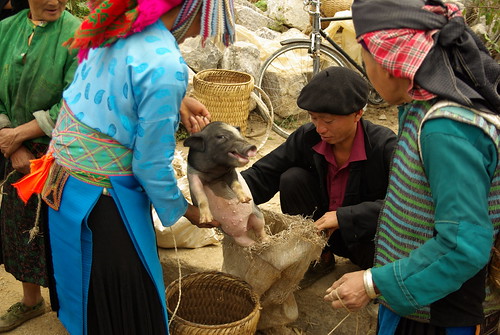The pulverizer feed mill that is taking off on small dairy farms in East Africa (photo credit: East African Dairy Development Project).
Pulverizer machines can help small-scale farmers in East Africa transport, store and stall-feed their ruminant animals with the bulky dry forages they may have at hand on and near their farms. Such dry forages include grass and legume hays; fibrous crop residues such as stovers of maize, sorghum, and millet; cereal straws of rice, teff, wheat, barley and oats; and haulms of beans. Pulverizers shred this forage into lengths of a few millimetres.
What’s different?
Although pulverizers have been around for a long time, they have been little used on small farms. But now this technology is being promoted by an East African Dairy Development Project to improve the use of the crop residues and roughages available to smallholder farmers in Kenya, Uganda and Rwanda. Project staff are helping service providers to purchase pulverizers through loan schemes, are setting up business development services as part of local dairy ‘hubs’, and are providing technical back-up support. The rapidly increasing numbers of providers of this technology are generating competition and sparking innovations, such as mobile service providers.
What do pulverizers do?
Physically treating roughages is a main way to enhance the availability of their nutrients for cows and other ruminants. Pulverizing roughages on farms reduces their wastage by 30–60 per cent, while easing the fodder packaging, storing, transporting and feeding by farmers enhances the feed intake of farm animals by 30–60 per cent..
When did these services start?
Pulverizer services started in 2009 with about 20 operators in Kabiyet and Kipkaren districts in Kenya’s North Rift Valley; these have mushroomed in the last year to more than 200 operators in Siongiroi and Kipkelion in South Rift Valley as well Kieni and Ol-Kalou districts. The technology has also been replicated through dairy farmers business associations in Kiboga and Masaka districts of Uganda and Rwamagana, Gatsibo and Nyagatare districts of Rwanda. Local producers have now ventured into fabricating the machines, making them easily and cheaply available to the farmers.
Use of the pulverizer technology can increase profitable beef and milk production through more efficient use of forages, a benefit particularly valued by farmers during dry seasons, when forages are scarce. Among the most common users of the technology are service providers who transport and trade dry forages and others that pulverize forages on farms.
What we've learned
1. The hubs being created in this East African Dairy Project are providing the stimulus for new livestock feed markets as well as farmer access to credit (the credit is provided against their milk sales), which farmers often invest in improved feed production.
2. The clustering of dairy input services in local dairy hubs is enhancing community access to feed information, business skills and other resources useful to agribusiness entrepreneurs.
3. Smallholders are very interested in making better use of their crop residues for dry-season stall feeding.
4. When demonstrating use of the pulverizers to farmers, with the aim of increasing their adoption of this technology, service providers should stress ways the technology could directly benefit the farmers rather than how the technology works.
5. Dairy farmer business and related associations should be supported and used to scale up use of this technology by farmers and farmer groups.
About the Project
The East African Dairy Development Project envisions transforming the lives of 179,000 families by doubling household dairy income in 10 years through integrated interventions in dairy production, market access and knowledge application. The Project is working to improve on-farm productivity by increasing milk production, improving milk quality and providing access to production inputs through business delivery services. The Project aims to improve market access by developing local hubs of business delivery services in association with chilling plants that facilitate market access. The Project is also linking producers to formal markets through processors and increasing the benefits milk producers obtain from traditional markets. The Project is funded by the Bill and Melinda Gates Foundation.
The article was developed by Beatrice Ouma, regional senior information officer in the East African Dairy Development Project, and Ben Lukuyu, a scientist working at the International Livestock Research Institute, one of the partners collaborating in this Project.
For more information, contact the Project at eadd@eadairy.org or read about recent progress of the Project on the Bill and Melinda Gates Foundation website.












